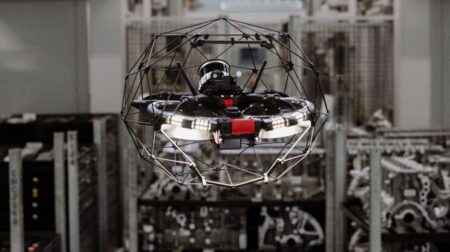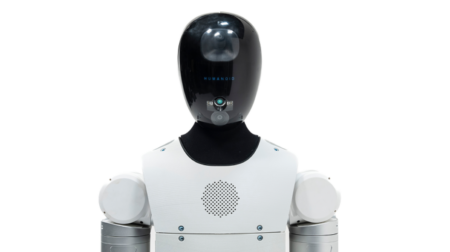In the most recent video from American robot manufacturer Boston Dynamics, named “Atlas Gets a Grip,” the company demonstrates the robot’s ability to manipulate and interact fluidly with objects around it.
In the video, the bot can be seen delivering a bag of tools to a person waiting at the top of a multi-story scaffold, which involves Atlas grasping, carrying and tossing the tool bag, climbing stairs, jumping between levels and pushing a large wooden block out of its way.
This is all followed by a jumping dismount with an inverted 540-degree flip.
“We’re layering on new capabilities,” said Ben Stephens, Atlas controls lead at Boston Dynamics.
“Parkour and dancing were interesting examples of pretty extreme locomotion, and now we’re trying to build upon that research to also do meaningful manipulation.
“It’s important to us that the robot can perform these tasks with a certain amount of human speed.
“People are very good at these tasks, so that has required some pretty big upgrades to the control software.”
According to the company, a robot performing a flip requires a more nuanced understanding of its environment, including perceiving and moving over and around fixed obstacles.
For the moves performed in this recent video, the robot’s locomotion and sensing capabilities came up against the added challenge of not only detecting, gripping and moving objects with different sizes, materials and weights, but also staying balanced while carrying those objects through its environment.
Boston Dynamics also explained that even pushing the wooden box from the platform was a deceptively complex task, as Atlas needed to generate enough force to move the box till it fell and lean its weight into the shove, without falling off the scaffold itself.
What’s more, the flip at the end of the routine was reportedly much more difficult to achieve than previous acrobatics, because the twist adds asymmetry that isn’t found in a regular backflip.
This, the company said, not only made the maths more complicated but meant, in trial runs, Atlas kept getting tangled in its own limbs as it tucked its arms and legs. This meant engineers needed to regularly troubleshoot and improve the control system so that it was able to choose strategies that avoided self-collisions.








